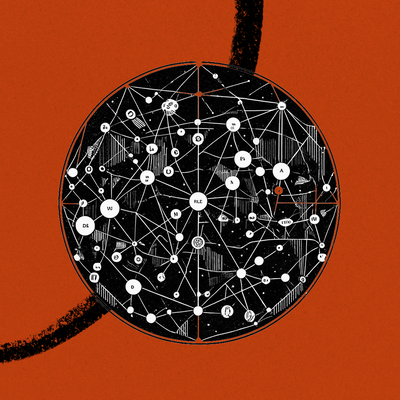
In my piece last week about five new thinking styles for working with thinking machines, I wrote about why it is important, in the age of AI, to think in terms of sequences rather than essences: learning to cope with dynamic contexts rather than trying to locate fixed, discoverable truths. This week I’m covering a practical application of this thinking style.
Was this newsletter forwarded to you? Sign up to get it in your inbox.
A common piece of startup advice from the last 10-15 years is: "Make something people want." It resonates because it effectively distills the core job of a founder into a phrase. Unfortunately, it’s not very actionable. It’s sort of like telling an investor: “Beat the market.”
In both of these cases, the obvious next question is: “How?”
A dominant framework for thinking about this question is to consider customer needs. Under this worldview, people simply buy the products they need. Or to put it another way, they “hire” products to do specific jobs for them.
If you use this framework, you often implicitly adopt the view that people have an objective, discoverable set of problems that they need solved. And that if you look closely enough, you can map out those problems, connect them to needs, and thereby identify products to build.
This is a scientific approach to the building of products. Something previously mysterious becomes an empirical activity: You go out and discover needs, and then create ways to fulfill them. This means talking to customers—on the street, through surveys, on the internet, in bars—however and wherever you can find them.
A naive way to do this is to grab a potential customer by the collar and straight-up ask them, “What do you want?” Any experienced founder can tell you this doesn’t normally work. You get shrugs or, if you’re in Manhattan, the occasional, “A fuckin’ raise!”
People don’t have a list of needs at hand.
Instead, an experienced founder acts more like an ethnographer. Their goal is to build up a detailed understanding of their target customer: what they do when they wake up in the morning, how they go through their inbox, and how they respond when they see that their boss replied to their long, detailed, late-night email with the single word “No.” The idea is to be objective. You ask questions to gather neutral data. That data tells you the truth about the world. You don’t want to fool yourself with leading questions and trying to confirm your priors.
But as any experienced founder knows, this process is fractal.
The deeper you get into asking questions about a person’s day, the more detail there is to observe. And true needs or jobs—the ones that are burning or unfulfilled—get lost in the process of mapping the infinite contours of an individual life.
What actually works? Drop the objectivity. Instead, lead with a particular idea or bias. Once you present to a customer your own view of the world or a perspective on what you intend to build, everything changes. Suddenly, the squishy mess inside their head hardens into visibility. It’s like a non-Newtonian fluid subjected to force: a liquid until you press on it with the strength of your own perspective.
You’ve probably had an analogous experience in other areas of your life. Consider the question: “What do you want for dinner?” Or, “Which movie do you want to watch?” Or, “What kind of article do you want to read?”
The Only Subscription
You Need to
Stay at the
Edge of AI
The essential toolkit for those shaping the future
"This might be the best value you
can get from an AI subscription."
- Jay S.
Join 100,000+ leaders, builders, and innovators

Email address
Already have an account? Sign in
What is included in a subscription?
Daily insights from AI pioneers + early access to powerful AI tools









Comments
Don't have an account? Sign up!
AttaBoy, Dan. Write like you mean it and from your experience. I love this because it is you, the founder, talking to me, the founder, and we know obsession with client delight over our own ego is important. No screen shots. No prompt scripts. An article from your head and heart. Hooray.
@[email protected] thanks Georgia!
Nice read!
I've always found the juxtaposition of Steve Jobs's "It's not the customer's job to know what they want" and the startup advice "Make something people want" both compelling and slightly perplexing. You clarify and provides what i have been seeking. Thank you !
Dan, I was following your train of thought until you transitioned into "Learn to be the right kind of person". The example of restaurant proves the point, however, doesn't solve the problem of software products (which Every and you are likely focused on). Software products don't have as much of semantic feel (like restaurants decoration and zaatar etc).
Could you please expand a little on the ending and tie it back to software products? Thanks.
@smith.jason.work I feel all products that work in a competitive environment are a culmination of thousands of small details that the maker of the product chose to prioritize, creating a product that feels like it is greater than the sum of its parts. It may not be true for products that don't have to compete, but for products like Skype vs teams, in the software realm, or the users choose based on these layering of details, of how convenient, well thought out something is. As Walt Disney used to say, it is the details that singularly might not matter to a customer, but thousands of details do leave a subconscious mark, that is hard to replicate, and is something users respond to and appreciate nonetheless.
@chawlagaurav10 Interesting. I see. Thank you for expanding on that.
As a visual person (designer and product lead) I always lead with an idea. I want to provide something that generates thinking in people. And usually in an appropriate level of fidelity (reality). I’ve never really found raw, fundamental UX Research worth the effort. (But I, also not very good at it). This process, is essentially prompting. And it’s the same thing I do with LLMs. I give them reference designs as a mechanism to trigger the response and it works really well. (I know that we all know this).
The second part is that I am using the LLM to do exactly the same for myself. I feed it artefacts for review and I out (I love my AI focus groups!) and then I push myself to consider and reconsider patterns, and assumptions and ideas. I’d say that the process of using AI is more important to me than the responses whenever I’m trying to create products or features.